[Photonicinduction] purchased a very very bright light. This 20,000 Watt half meter tall halogen will just about light the back of a person’s skull with their eyes closed. These are typically used to light film sets.
Most people couldn’t even turn such a light on, but [Photonicinduction] is a mad scientist. Making lightning in his attic, it’s easy to mentally picture him as the villain in a Sherlock Holmes novel. Luckily for us, if he has any evil tendencies, they are channeled into YouTube videos.
He gives a good description of the mechanical and electrical properties of the light. The body is as one would expect for an incandescent light. A glass filament envelope with the filaments supported within. The envelope is evacuated and filled with an appropriate gas. This light is dangerous enough that the outside must be thoroughly cleaned of fingerprints to keep a hot-spot from forming, which could cause the lamp to explode.
After some work, he managed to convince himself that the filaments within were not, in fact, garage door springs, and gave a demonstration of their properties. For example, their resistance goes up as they are heated. In order to keep from tripping the power supply, filaments this large must be preheated. Failure to do so passes a very large number of amps.
The next step was to hook the lamp up to his home-made 20 kW power supply. He gives a good demonstration of just how bright it is. Within seconds he’s sweating from the heat and definitely can’t even open his eyes to see with the tiny sun occupying the center of his abode. Video after the break.


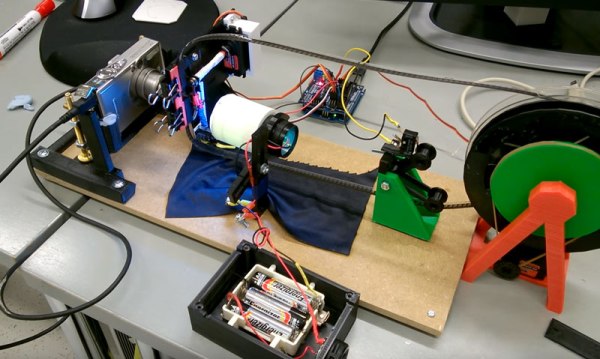
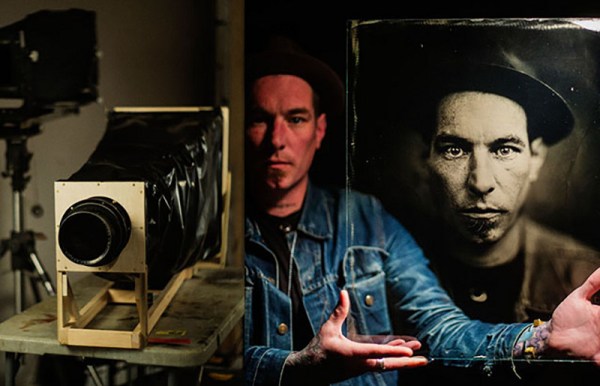
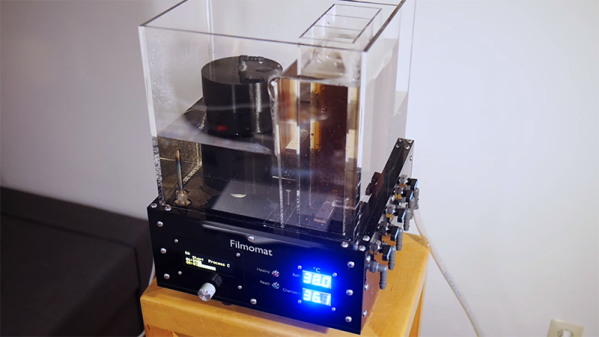

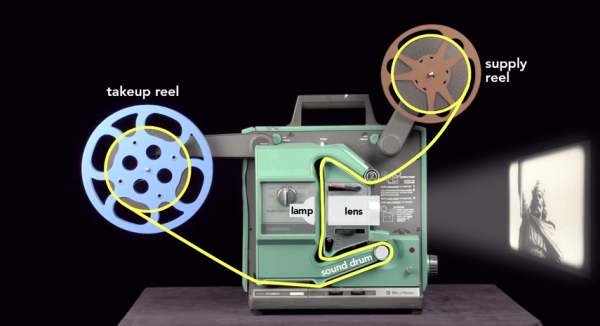
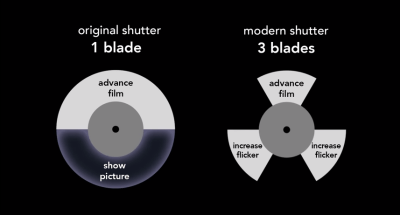 Film is projected at a rate of 24 frames per second, which is sufficient to create the POV illusion. A projector’s shutter inserts itself between the lamp and the lens, blocking the light to prevent projection of the film’s physical movement. But these short periods of darkness, or flicker, present a problem. Originally, shutters were made in the shape of a semi-circle, so they block the light half of the time. Someone figured out that increasing the flicker rate to 60-70 times per second would have the effect of constant brightness. And so the modern shutter has three blades: one blocks projection of the film’s movement, and the other two simply increase flicker.
Film is projected at a rate of 24 frames per second, which is sufficient to create the POV illusion. A projector’s shutter inserts itself between the lamp and the lens, blocking the light to prevent projection of the film’s physical movement. But these short periods of darkness, or flicker, present a problem. Originally, shutters were made in the shape of a semi-circle, so they block the light half of the time. Someone figured out that increasing the flicker rate to 60-70 times per second would have the effect of constant brightness. And so the modern shutter has three blades: one blocks projection of the film’s movement, and the other two simply increase flicker.









